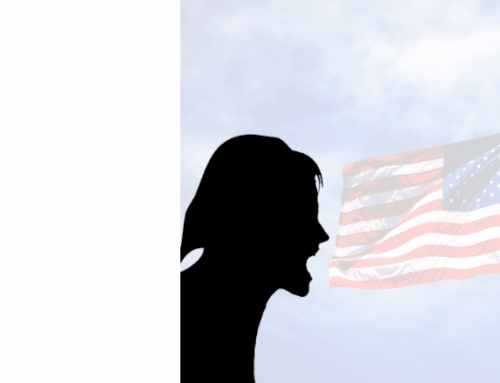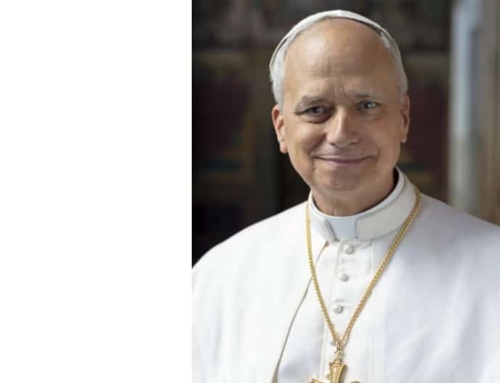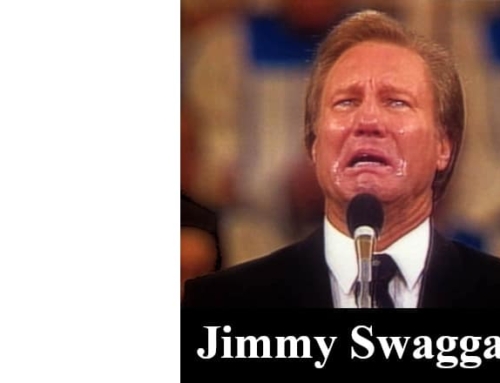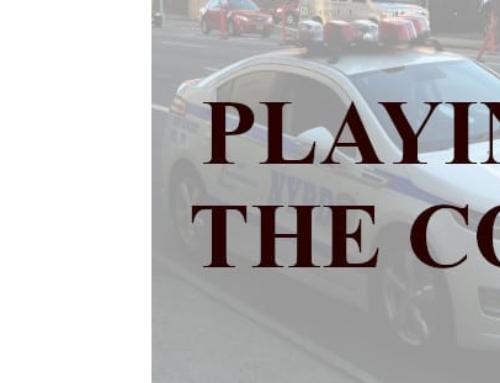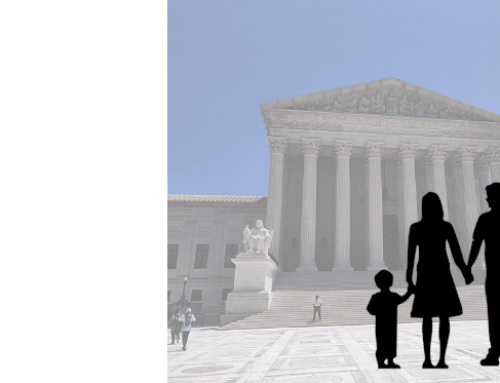Catholic League president Bill Donohue comments on the dark side of Indigenous peoples:
Serious historians know that when it comes to war, different parties to the conflict have had different motives, ranging from the just to the unjust. They also know that it is a rare occasion when all sides are equally innocent or guilty. To be sure, some may be more aggressive, but it is a mistake to assume that had the vanquished been in possession of the means to do so, they would not have been as vicious as the victors. Not all the losers in war were noble.
This needs to be said in light of what is now fashionable every October—Columbus bashing is all the rage. Just as bad, some promote the idea that virtually all the Indians were kindly souls who respected the land and treated each other with dignity. This is a romantic fairy tale having no basis in history. The truth is that some were gentle while others were brutal.
It is also part of the conventional wisdom that almost all the Indians were massacred by the white man. Wrong.
Historian William D. Rubinstein, in his book, Genocide, writes that “recent historians sympathetic to the plight of the American Indians at the hands of European settlers from 1492 onwards have repeatedly noted that while 95 percent of Indians living in the Americas perished (according to those historians) over the century or so after the coming of the white man, most of this diminution in population occurred through such factors as the importation of virulent diseases previously unknown in the Americas, the destruction of settled life-styles, enslavement, and the psychological effects of conquest rather than through overt murders and slaughters, although plenty of these took place.”
On the flip side, we have some commentators who want to portray the Indians as savages who never contributed to America’s greatness. They, too, are wrong.
The Indians served with distinction in World War I and World War II. Indeed, during World War I they enlisted in the Army in greater numbers, proportionally, than non-Indians. In World War II, tribes with strong warrior traditions volunteered, again with “disproportionate numbers.”
Before detailing the dark side of Indigenous peoples, as a corrective to the prevailing notion that only the white man acted unjustly, it is important to note that the term “Indigenous” is misleading. The Indians were immigrants who came here from Asia. In “prehistoric times,” they “crossed the land bridge across the Bering Strait to the lands of the Western Hemisphere.”
The following is a selection of practices that were common to some Indian tribes.
- Long before the Salem Witch Trials, the Navajo believed that witches ran rampant and caused all manner of destruction. This belief filled the tribe with a sense of fear and foreboding. To counteract this, anyone believed to be a witch (usually someone on the fringes of the tribe) faced violence and death. Frequently witches were scapegoats for anything that negatively impacted the tribe.
- The Chumash Indians, who lived on the Channel Islands off southern California, had an established class system in which the upper class owned slaves. Because the Chumash had no established agriculture, their food came from fishing, hunting, and gathering, they appeared to own slaves for no other purpose than for wealthy tribe members to flaunt their power.
- Among the Yanomamo Indians of Venezuela, women were forbidden to have intercourse with their husbands throughout pregnancy and until the child was weaned. To avoid extended periods of celibacy, Yanomamo couples would kill their infants.
- Inuit adults encouraged children to kill small animals and birds by torturing these defenseless creatures to death. Even their sled dogs, vital to their ability to cross the vast icy expanses, were not spared abuse. Sled dogs were frequently kicked and abused for no reason. If a dog was injured during a journey across the tundra, the dog would be mercilessly beaten and then abandoned to die alone in the frozen wilderness. Although some have claimed that this might have been done to direct aggression away from humans and towards animals, the Inuit were prone to outbursts of lethal violence and killed one another at alarmingly high rates.
- The Hudson Bay Inuit believed that boiled meat was “man’s food, too good for women to have.”
- The men of the Mehinaku tribe in Brazil frequently used threats of gang-rape to assert their dominance over their women.
- The Kwakuitl people of Canada practiced an extremely hierarchical society. About 15 percent of the population lived as slaves and the sole property of the chief. The chief’s family subsisted entirely off the labor of their slaves. The economic productivity of the tribe went primarily to the chief. Further, the Kwakuitl would war with neighboring tribes to capture more slaves.
- The Aztecs sacrificed as many as 250,000 people per year to appease their blood-thirsty gods. Victims had their beating hearts ripped out of their chests, and their corpses were eaten by the Aztec nobility. Most of the sacrificial victims were either prisoners of war or tribute from surrounding tribes to avoid war with the Aztecs. The Aztecs were constantly at war or using their military to intimidate tribute from nearby tribes. Although they had acquired many riches through their strength of arms, the average Aztec received none of the spoils of war. Instead, wealth remained in the hands of the nobles. Commoners lived impoverished lives, and the poorest among the landless peasants would sell themselves into slavery. Today, in California schools, as part of their multicultural curriculum, children are told to chant prayers to the same Aztec gods who demanded human sacrifices. They are now being sued for crossing church and state lines.
- The Tonkawa Indians of central Texas were cannibals. They would raid other tribes to take captives. Unlike other tribes, the Tonkawa would eat these captives without any religious ceremony.
- From 1622 to 1626, the colonists in Virginia fought the Second Powhatan War. After initial conflicts between the colonists at Jamestown and the Powhatan Confederacy, peaceful cohabitation existed between the two groups. However, on March 22, 1622, without any provocation from the colonists, the Powhatan attacked the colonists. Of the 1,250 settlers, the Powhatan massacred 347 in a single morning. The Powhatan had hoped the colonists would abandon Jamestown, but instead the settlers dug in and fought back. The war ended in a peace that favored the colonists, and due to the vicious initial attack, English colonies adopted harsher policies in dealing with the Indians.
- From 1640 to 1698, the Iroquois Confederation, dominated by the Mohawk tribe, waged war on the Algonquin tribes and their French allies in the Great Lakes region in what is known as the Beaver Wars. In the 1620s, the Iroquois began trading furs at the Dutch trading post on the Hudson River. This gave them access to European weapons. With powerful trading connections and a new arsenal of superior weapons, the Iroquois sought to expand their power by taking rich hunting grounds away from the surrounding tribes. The war began in 1640 when the Iroquois drove the Huron out of New York. By the 1650s, the Iroquois began attacking French settlements. In this phase of the war, Iroquois war parties would raid isolated settlements, swooping down suddenly, wielding tomahawks and knives used for scalping to slaughter the inhabitants. In some cases prisoners were taken either as slaves or were slowly tortured to death. Some Iroquois would torture their victims to death in communal religious ceremonies because they believed it was a way for the tribe to harness the spiritual power of the enemy. Further, some of these victims were eaten in hope that Iroquois warriors could harness the strength of their enemies. The Mohawk, in particular, were known for their cannibalism. The Algonquin word for Mohawk meant “flesh-eater.” In the 1660s, the Iroquois and French agreed to a ceasefire once the French brought over regular troops from Europe. In the meanwhile, the Iroquois began a military campaign of expansion to the West. With superior arms, the Iroquois came to control the rich hunting grounds in a region extending from the Colony of Virginia up to the St. Lawrence River pushing west to the Mississippi River. They displaced several tribes including the Petun, Erie, Shawnee, Sisquehannock, and Lakota. Hostilities resumed with the French in the 1680s when the French sought to begin hunting in the region controlled by the Iroquois. The French adopted similar tactics to the Iroquois and had curtailed the Iroquois expansion. In 1698, the French and Iroquois made peace because the French wished to use the Iroquois as a buffer against English expansion in North America. As part of the peace, the several tribes displaced by the Iroquois were allowed to return to their ancestral lands; however, many were so wiped out by the war that only a handful of the inhabitants ended up returning.
- From 1675 to 1676, the colonies in New England fought the King Philip’s War against the Wampanoag Indians and their allies. The war began after years of border tension between the Wampanoag and the colonists. In January of 1675, a Christian Indian, John Sassamon, came to warn the colonists that the Wampanoag were planning to attack; however, soon after Sassamon was found dead on the orders of the Wampanoag chief, King Philip. A trial was held for several of the Indians responsible for the murder, and they were found guilty by a jury of colonists and Indians, and they were hanged. Enraged that his supporters were executed for murder, King Philip waged war on the colonists raiding many settlements and killing as many people as he could. The colonists responded by sending militias to destroy King Philip’s home village on Mount Hope, Rhode Island. This brought other tribes into the war to aid King Philip. In September of 1675, around 700 Nipmuc Indians ambushed a wagon train of colonists and their militia escorts. The Indians massacred the colonists, killing almost every member of the party, in what is now known as the Battle of Bloody Brook. In retaliation for Bloody Brook, Plymouth Colony’s Governor Josiah Winslow, ordered an assault on an Indian fortification near the Great Swamp in West Kingston, Rhode Island. An estimated 300 Indians died in the attack or from exposure to the winter weather following the battle; several Indians were burnt at the stake. After the fight at the Great Swamp, King Philip moved his camp to New York to win the support of the Mohawk. The Mohawk were traditional rivals of the Wampanoag and the other tribes supporting King Philip. The Mohawk massacred the main Wampanoag camp in New York and began raiding King Philip’s camps in New England. The brutal attacks from the Mohawks convinced several of the tribes supporting King Philip to make peace with the colonists believing they would get better terms from the colonists than they would from the Mohawks. In early 1676, the Indians continued to raid, plunder, and kill colonists throughout Massachusetts, Rhode Island, Connecticut, and Maine. In one instance known as the “Nine Men’s Misery” incident, a group of King Philip’s warriors ambushed a group of 60 colonists and 20 Christian Indians. The warriors killed almost all of them in the fight, while nine men were taken and slowly tortured to death. In the spring of 1676, the colonists began to gain the upper hand, and the war finally concluded when King Philip was killed by a Christian Indian fighting with the colonists on August 20, 1676. King Philip’s body was decapitated, and hanged, drawn, and quartered, and his head was displayed in Plymouth Colony for almost two decades following the war. King Philip’s War is considered the bloodiest war per capita in U.S. history causing the deaths of several hundred colonists and destroying dozens of settlements. Thousands of Indians were killed, wounded, or captured and sold into slavery or indentured servitude as a result of the war.
- During the French and Indian War (1754-1763), there were many acts of violence committed by all parties. Perhaps the most famous instance of the war was the Massacre of Fort William Henry. In 1755 a large force of French and Indian soldiers pushed into New York. They began a siege of Fort William Henry held by a few British soldiers and American colonial militia. Without any hopes for reinforcements, the fort would soon fall. Seeking to avoid a pitched battle, the French commander offered terms to the British allowing them to retreat to Fort Edwards further south in exchange for Fort William Henry. The British accepted the terms, but while they were marching south they were set upon by the Indians who were part of the French coalition. The Indians brutally killed and scalped 185 soldiers and took hundreds more back to Canada as prisoners. The French had told the Indians that they were to let the British retreat; however, the Indians felt they were robbed of honor and the spoils of war so they attacked anyway. In some reports, the desire of the Indians to take spoils of war was so great that they desecrated the fort’s cemetery to take additional scalps, not only a sign of honor but also to receive a bounty, and any clothes or blankets that were buried with the dead. This atrocity was immortalized in the novel The Last of the Mohicans. Among the Indians involved in the massacre were the Huron. The Huron were known to torture and eat their captives. Women captives were frequently used as slaves while men were slowly tortured to death in religious ceremonies. If a captive showed particular courage, either in battle or during torture, the tribe would eat him in a religious service hoping to acquire his strength. It was not uncommon for the heart of a captive to be roasted and given to young men and boys to eat. The chief would usually consume the captive’s head.
- Between 1811 and 1924, the United States and Indian tribes west of the Mississippi fought a series of wars. These wars were brutal and atrocities were committed on both sides. Two of the most famous incidents were the Battle of Little Big Horn and the Wounded Knee Massacre. The Battle of Little Big Horn was part of the Great Sioux War of 1876. In the battle, Lt. Col. George Armstrong Custer’s 7th Cavalry engaged a much larger force of Lakota, Dakota, Northern Cheyenne, and Arapaho under the leadership of Sitting Bull and Crazy Horse. Custer and 268 of his men were killed. As was common during these conflicts, the Indians mutilated many of the bodies to send warnings to other Americans not to venture west. In response to this great defeat, the United States increased its military activity against the Indians. This culminated in the Wounded Knee Massacre on December 29, 1890. A reformed 7th Cavalry attempted to disarm a group of Lakota Indians camping at Wounded Knee. In the process of disarming the camp, a gun went off. Fearing a repeat of Little Big Horn, the Cavalry troopers began firing on the camp. Since most of the Lakota had given up their guns, they had little means of defending themselves. More than 250 Lakota men, women, and children were killed while 51 more were wounded.



